Growing Salt: The Salineras
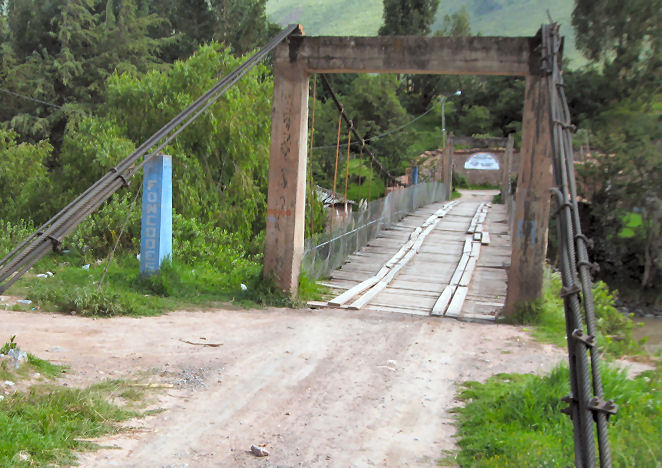
Last year, when I was staying in Huarocondo near the Sacred Valley with my daughter Rebecca, we were able to visit the Salineras near Maras. I was fascinated with this ancient site where salt has been harvested for over 500 years and maybe even for a millennia. So, on Thursday I decided to again hike up to the salt farms—a beautiful and tough climb from the Sacred Valley. I took a collectivo (combi or van) from Calca and asked to be let off at Tarabamba, a little village east of Urubamba. Following a road which led me over the abundantly-flowing Urubamba river, I soon found myself walking UP the trail.
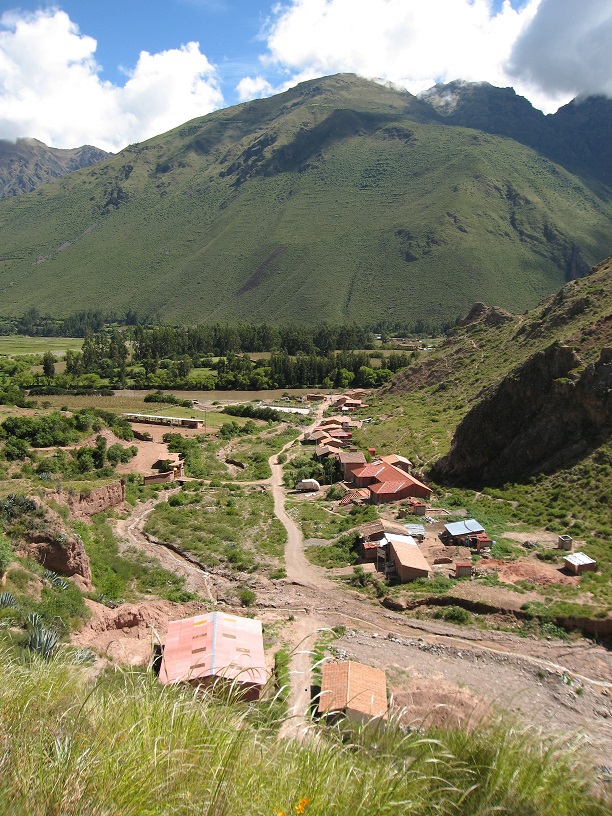
It is a steep, rocky trail and my trekking poles came in very handy. After about 45 minutes of climbing, occasionally using the excuse to look back down the valley in order to catch my breath, I came upon the site of the Salineras—a grand operation! In another 20 minutes, I was walking along the pathways among the ponds.
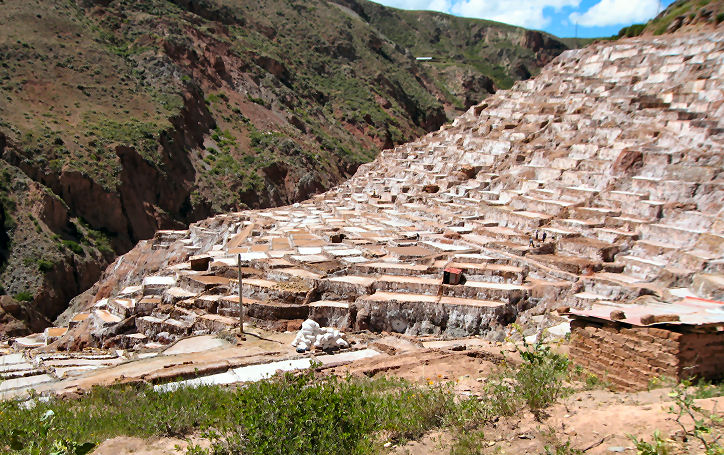

This high plateau lies on a bed of salt and soluble minerals. As a result, one of the major springs flowing from the mountainside is has a high saline content—the water tastes like the ocean!
As long as 900 years ago—maybe longer—no one is sure, the people here figured out that they could direct the spring water into shallow terraced ponds during the dry winter months. The water is allowed to evaporate, leaving behind the salt and minerals, which can then be harvested.
Today, the area is farmed cooperatively. Any family who wishes to is encouraged to lease one or more ponds and after receiving instructions they can begin “farming.” The salt, in various forms, is sold wholesale to companies who bring their trucks up to collect large bags from the on-site warehouses.
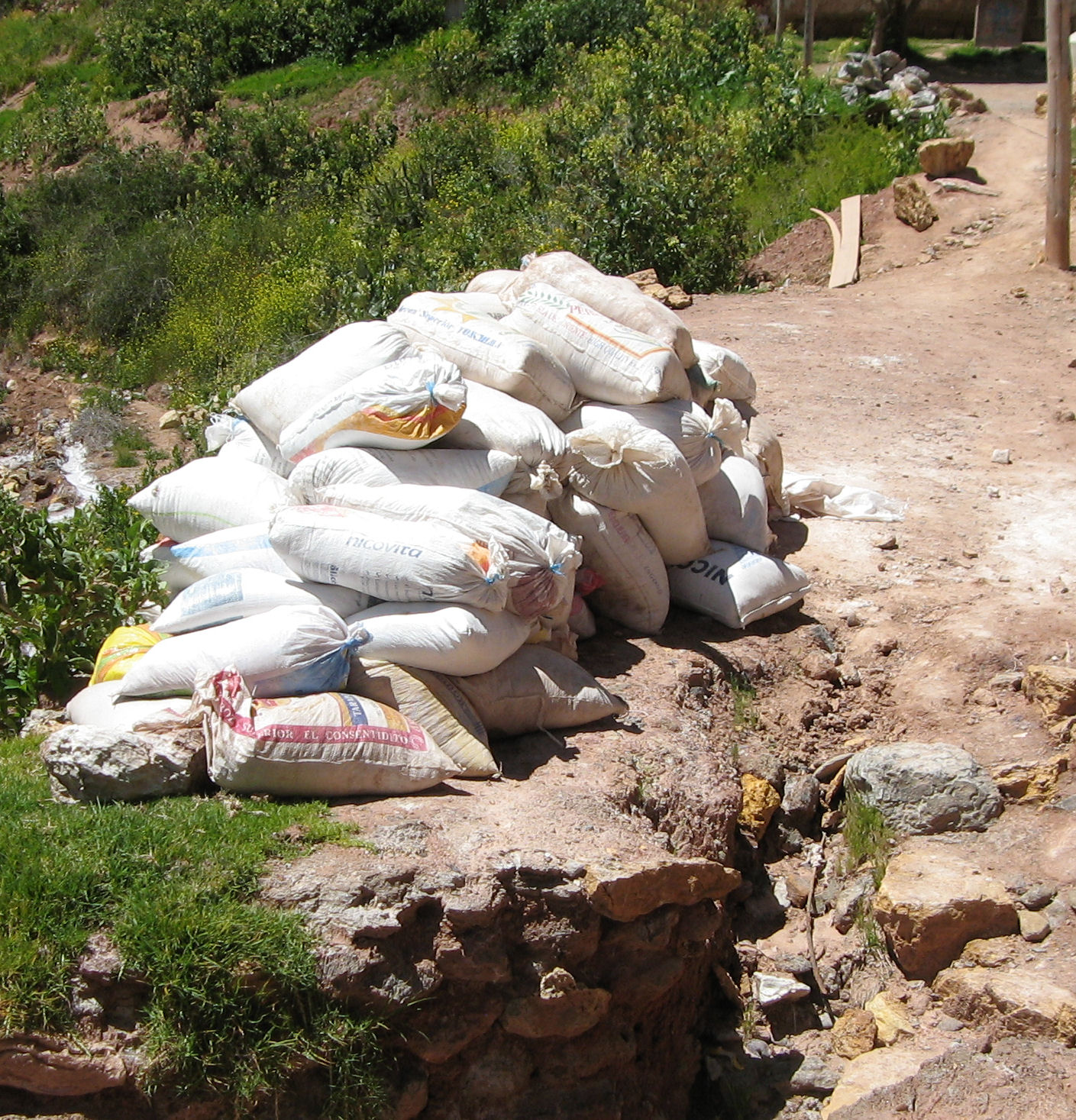
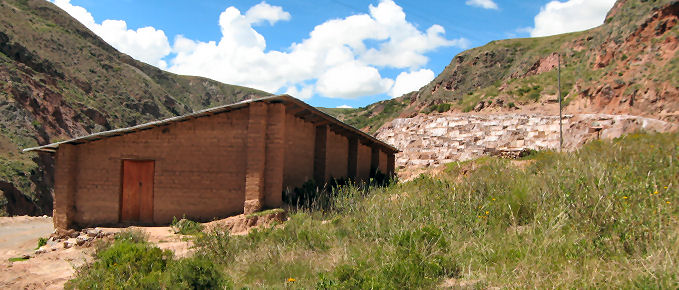
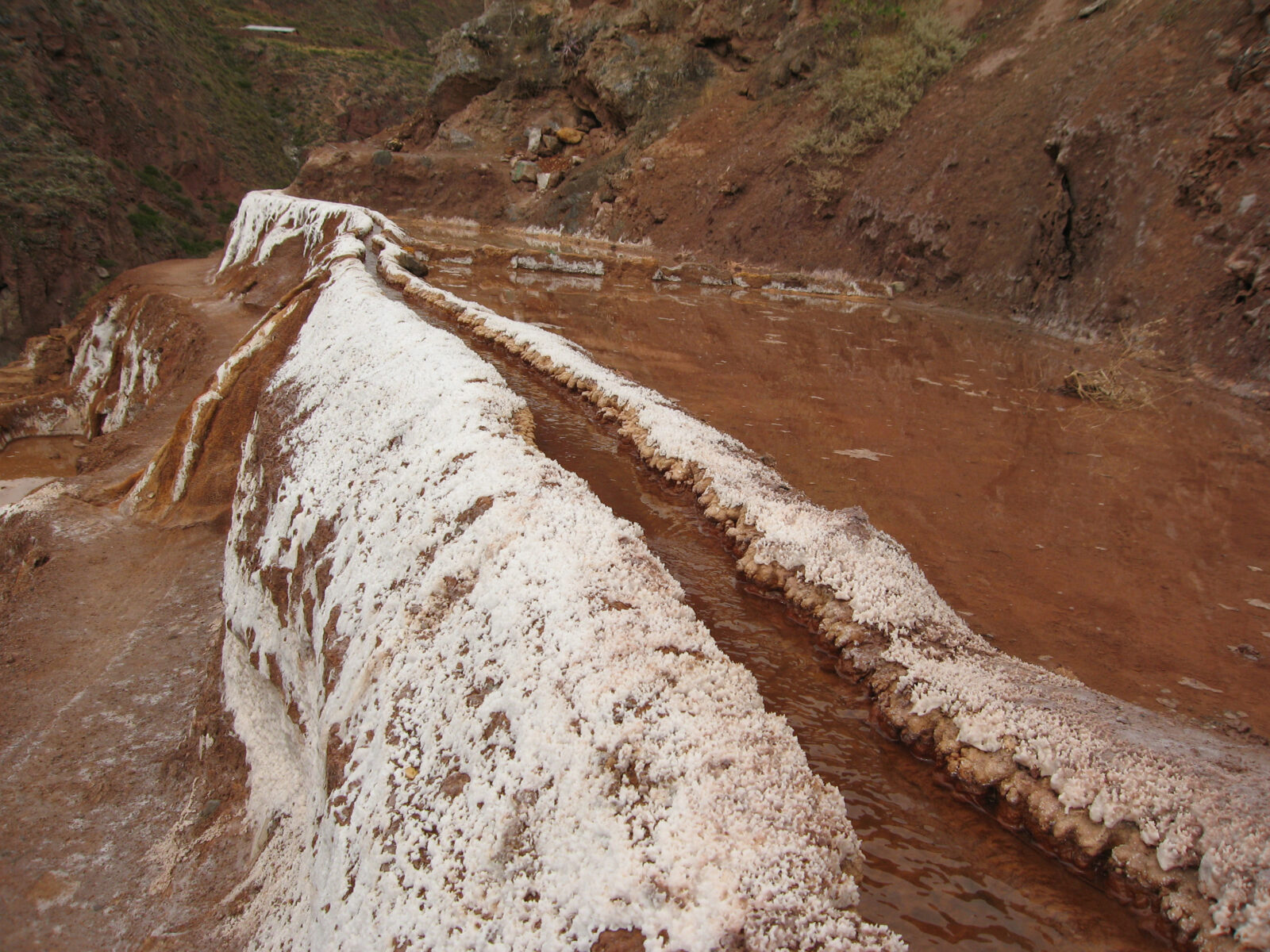

After leaving the Salineras, I walked up another series of switchbacks and on for almost two more hours uphill to the little village of Maras. The view of the Andes mountains is very dramatic from there, especially with the dark rain clouds hanging over them.
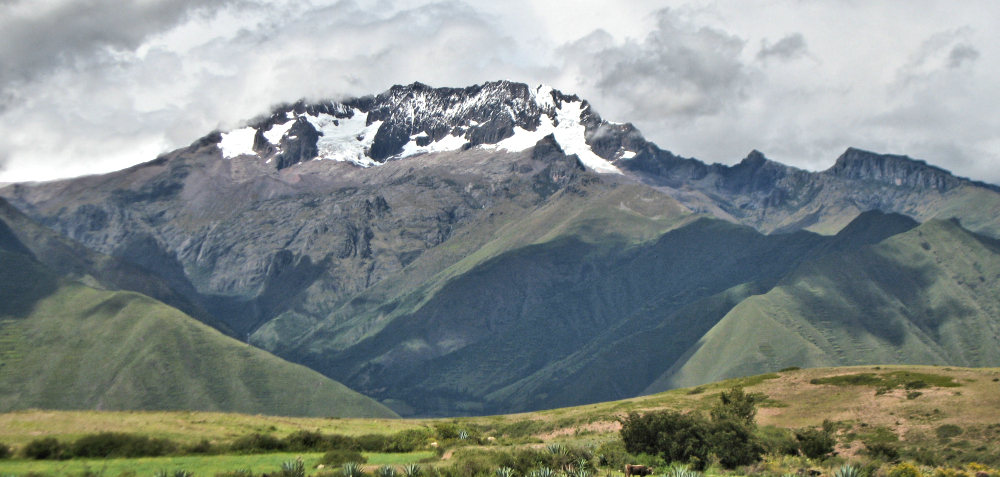
I encountered very few people and when I did, I was asked the same questions: Was I walking to/from the Salineras? Was I alone? No friends? And one woman asked “¿Tienes miedo?” (Are you afraid?) and I answered “No,” but I should have said “Solamente de perros malos.” (Only of bad dogs.) I don’t like dogs and when they come growling I become very afraid. However, walking in the beautiful countryside here and encountering the local people in their fields makes it worth the risk. I have learned that they are usually easy to chase away. (The dogs, not the people!) Also, I have learned that there has not been a reported case of rabies in the area for almost 20 years—so I guess I’ll take my chances.
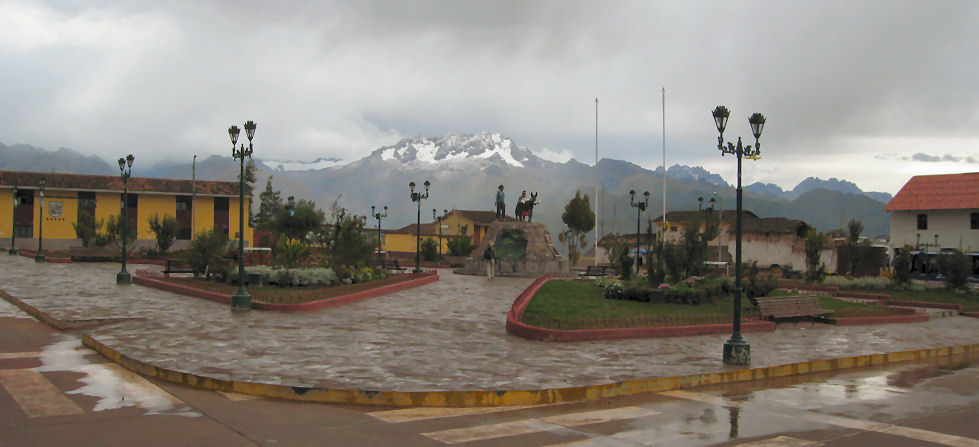
I hopped on the first collectivo out of town and within half an hour, I was in Urubamba and soon to be back in Calca where a warm shower awaited me.
If you wish to take this hike, here are the directions:
From the Urubamba bus station, take a collectivo to Ollantaytambo. Ask the driver to let you off at Tarabamba at the puente (bridge).
From Ollantaytambo, take a collectivo to Urubamba and ask the driver to let you off at Tarabamba at the puente (bridge).
Look for the sign pointing toward the river for Arco Iris del Puente Restaurant. Walk down a dirt road following the signs to the restaurant which is next to the bridge. After crossing the bridge, you may meet a person stationed there to collect fees for Salineras. Currently, the cost is S/.10. He will give you a ticket for which you may or not be asked when you arrive at the Salineras.
After the bridge, continue to the right until you reach a junction. Turn left and walk through the village. You will soon come to a creek crossing and then the trail will begin its climb up a series of switchbacks.
As you near the Salineras, the trail will become a dirt road. Visit the site, and before leaving, be sure you have water for the rest of the hike—at least a liter per person.
At this point, you can backtrack down the way you came or take a taxi the to road to Urubamba and catch a bus there.
OR, if you want to do the same hike I did, from the salt ponds, walk up the path and exit through the main gate. Cross the parking lot. The main auto road will go left. Look for a dirt path zig-zagging up to the right. This is the walking path to Maras.
Keep following the most well-traveled trail for about 1 ½ —2 hours. (approximately 3.6 km or 2.2 miles). You can find refreshments at Maras.
Ask where to catch the collectivo or bus. Sometimes there is a bus going all way to Urubamba. Other times, you will have to catch a collectivo to main road that goes to Urubamba and then catch a bus there to take you down to the Urubamba terminal.
For other hikes in area, I recommend a little publication found at the textile store Awamaki, in Ollantaytambo. They have written a hiking guide for the area called Walks Hikes and Treks around Ollantatyambo, which describes this route as well as others.
While in Maras, you can also either walk to or take a taxi to the Moray archeological site, which is nearby. Moray requires at least a partial boleto turistico for entrance, which you can purchase at the site.
Here is a map of the hike:
Other Blog Posts You May Find Interesting
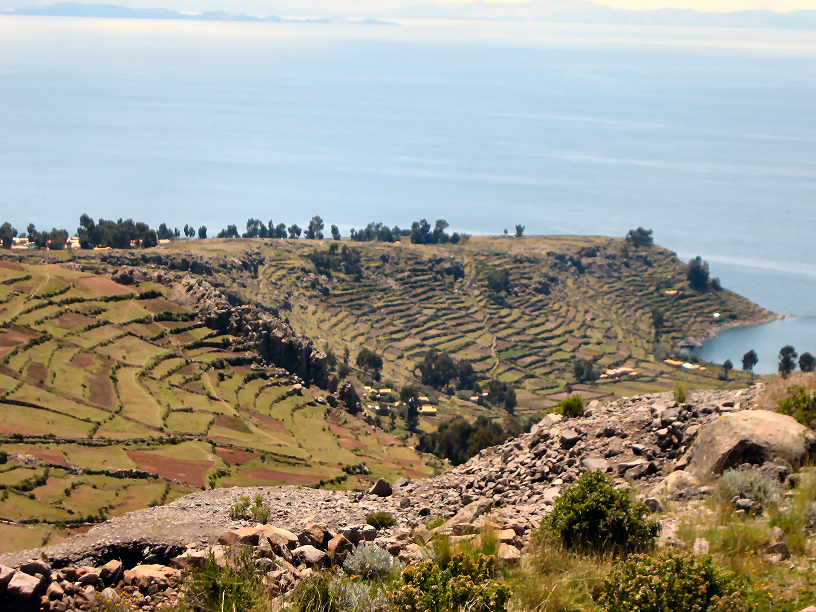
Celebracion de 60 Compleanos en Isla Amantani
The tienda faces the plaza and there were some young men outside on the steps. Meliza and I moved outside to sit near them. I asked if they could spin. Freddie, sitting next to me smiled broadly and said yes, and he started using the little Turkish spindle while his friend tried out the one that Ben made me.
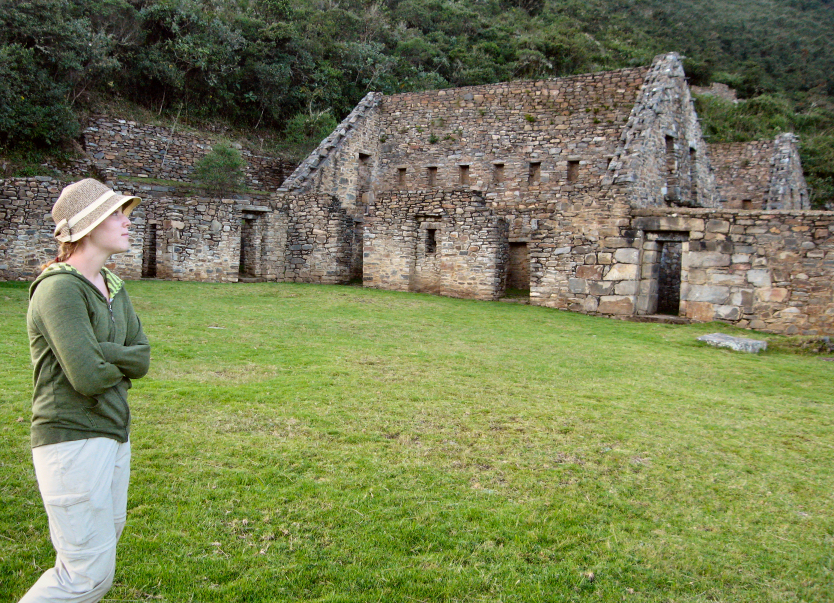
Choquequirao Trek Part II: Images of the Past
Choquequirao means “cradle of gold” in the Quechua language. After another filling lunch and a rest, we started up the trail to visit the Choquequirao ruins.
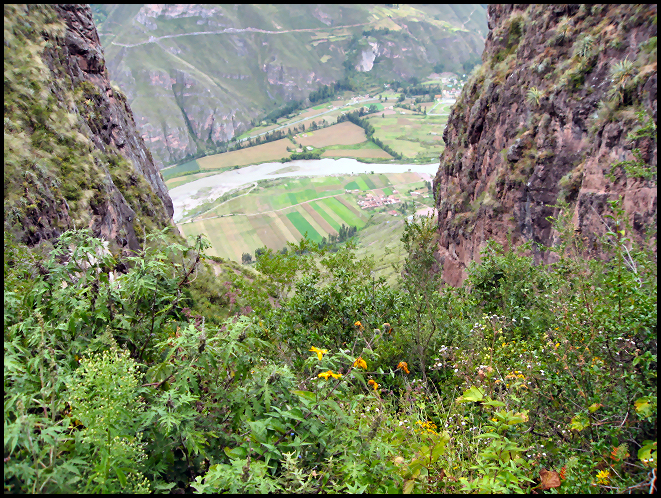
Huchuy Qosqo: Hiking up…up…up
It took me four hours to get to the top—it takes the average person three. I met a guide coming down with a tourist couple and he asked where my group was. I told him I was solita(alone) and he gaped at me.
2 thoughts on “Growing Salt: The Salineras”
Quite the hike there… those salt works were interesting
This comment has been removed by the author.